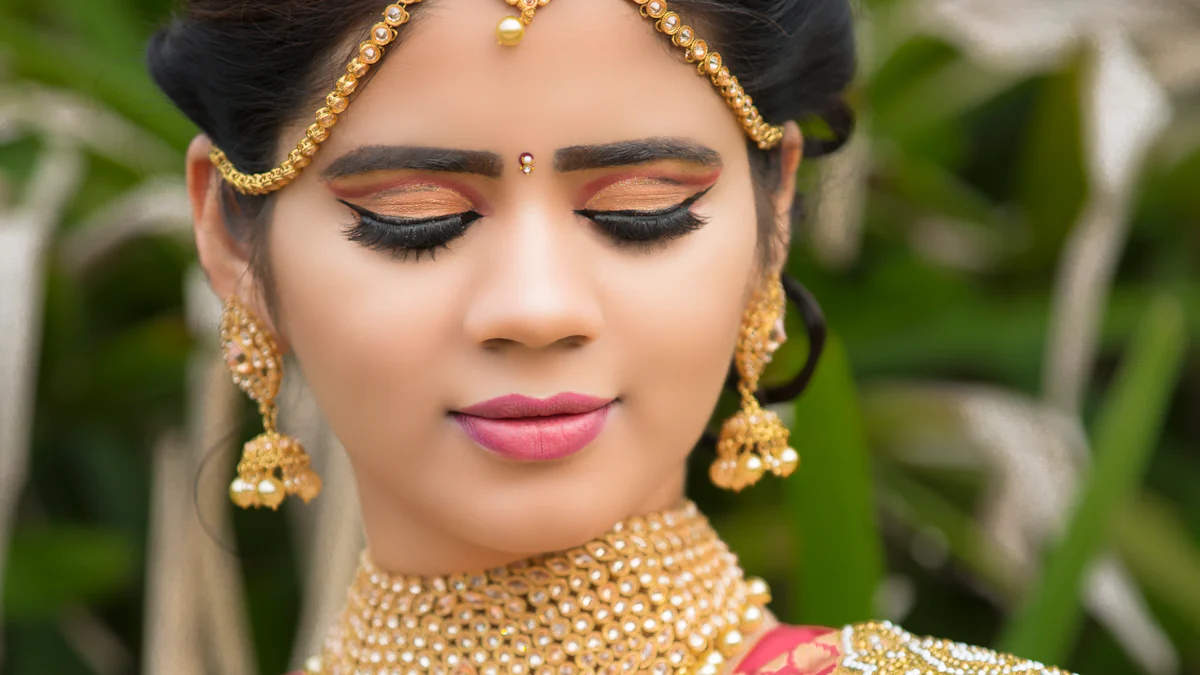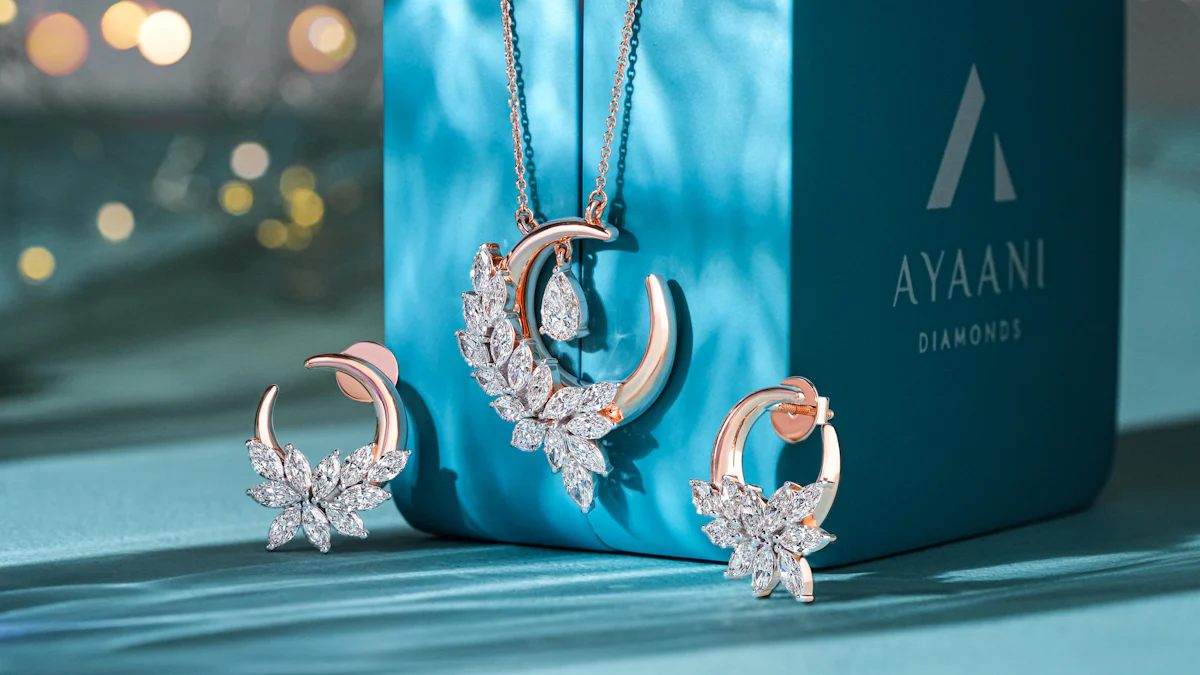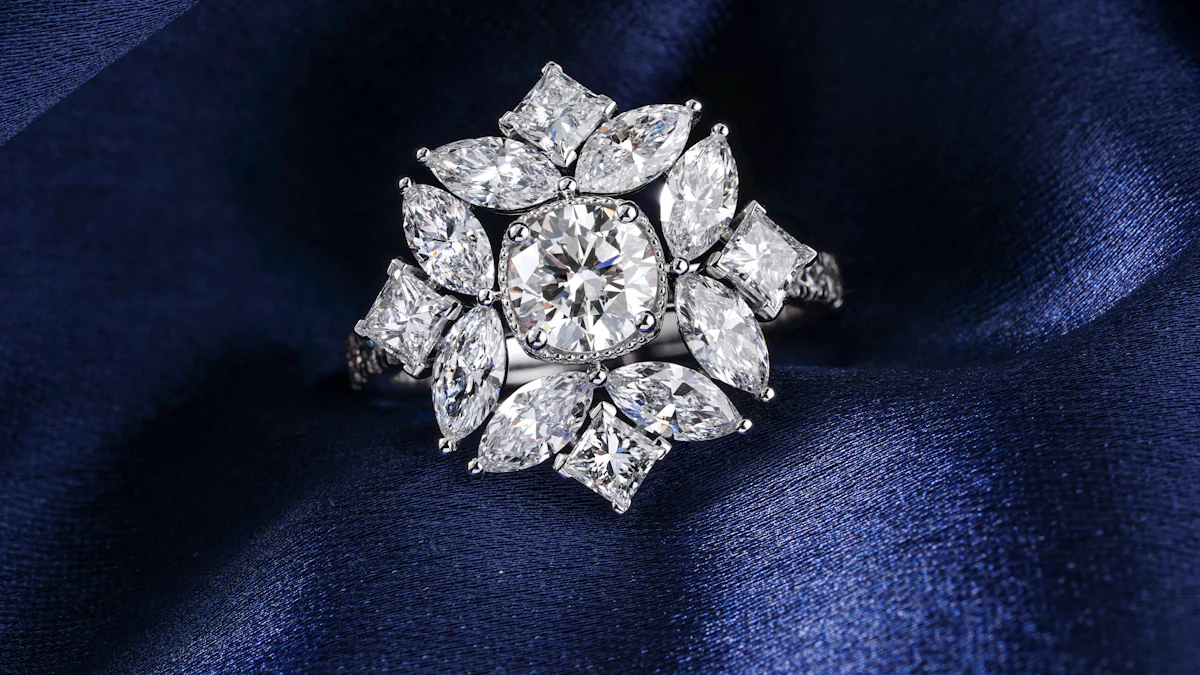Why CTTW Diamond Meaning Matters for Jewelry Buyers

When buying diamond jewelry, understanding CTTW can make all the difference. It helps you evaluate the value, appearance, and overall quality of a piece. However, many buyers misinterpret its significance. Some focus only on CTTW, ignoring the craftsmanship and quality of the diamonds. Others assume a higher CTTW always means better quality or a higher price. These mistakes can lead to disappointing purchases. By learning the true CTTW diamond meaning, you can make smarter purchasing decisions and choose jewelry that truly shines.
Understanding CTTW

What Is CTTW?
Definition of "Carat Total Weight"
Carat Total Weight, or CTTW, represents the total weight of all diamonds or gemstones in a piece of jewelry. It gives you a clear understanding of the diamond total weight in the design. This measurement is essential because it influences the price, appearance, and overall value of the jewelry. Whether you're buying a diamond ring or a necklace, knowing the carat total weight helps you evaluate what you're purchasing.
How CTTW is calculated
Calculating CTTW involves weighing each diamond or gemstone individually and then adding their weights together. Jewelers use precise tools to ensure accuracy. This process ensures that the total weight of diamonds in the jewelry is correctly represented. While CTTW provides a starting point, it’s important to explore other factors like the quality and cut of the diamonds to make an informed decision.
CTTW vs. Carat Weight
Individual carat weight vs. total carat weight
CTTW combines the weights of all diamonds in a piece, while individual carat weight measures the weight of a single diamond. For example, a ring with multiple small diamonds may have the same total carat weight as a ring with one large diamond. However, the visual impact and value of these two pieces can differ significantly.
Why the distinction matters for buyers
Understanding the difference between CTTW and individual carat weight is crucial. CTTW gives you an overview of the total weight of diamonds, but it doesn’t reflect the size or significance of each stone. A single diamond carat often has more visual appeal than several smaller stones with the same total weight. By knowing this, you can better assess the importance of carat weight and make smarter choices when buying jewelry.
Common Misconceptions About CTTW
CTTW and diamond quality
Many buyers mistakenly believe that a higher CTTW guarantees better quality. However, the quality of diamonds depends on factors like cut, clarity, and color. A piece with a high total carat weight but poorly cut diamonds may lack brilliance and beauty. Always consider the craftsmanship and individual characteristics of the stones.
CTTW and price determination
Another common misconception is that a higher CTTW always means a higher price. While total weight of diamonds does influence cost, the market often values quality over quantity. A single, high-quality diamond with excellent clarity and color can be worth more than multiple lower-quality stones with the same total weight.
Tip: Focus on the overall value and appearance of the jewelry rather than just the CTTW. This approach ensures you choose a piece that aligns with your preferences and expectations.
Why CTTW Is Important
Evaluating Value
How CTTW impacts the overall value of jewelry
CTTW plays a key role in determining the value of diamond jewelry. It provides an estimate of the total carat weight of all diamonds in a piece, helping you understand its overall worth. Larger carat total weight often increases the value and price of jewelry. However, other factors like cut, clarity, and color significantly influence the final value. For example, a diamond engagement ring with a high CTTW but poor-quality diamonds may not hold the same value as one with fewer but higher-quality stones.
The relationship between CTTW and cost
CTTW directly impacts the cost of diamond jewelry. Higher CTTW typically correlates with a higher price, but it’s not the sole determinant. The quality of the diamonds, including their brilliance and clarity, also plays a major role. Market trends can further influence the cost. For instance, during certain periods, larger stones may be more desirable, increasing the demand and price for higher CTTW pieces. Understanding this relationship helps you make informed decisions and ensures you get the best value for your investment.
Visual Appeal
The role of CTTW in creating a striking appearance
CTTW contributes to the visual appeal of diamond jewelry. Higher CTTW often means larger or more numerous diamonds, creating a dazzling effect. A diamond engagement ring with a high carat total weight can make a bold statement, while a piece with a lower CTTW may offer a more delicate and understated look. The choice depends on your personal style and the impression you want to create.
How diamond distribution affects aesthetics
The arrangement of diamonds in a piece significantly impacts its overall appearance. A necklace with many small diamonds may feel light and intricate, while one with fewer, larger stones can appear bold and substantial. Even with the same CTTW, the design and setting can create vastly different visual effects. A smaller diamond with excellent cut and clarity can outshine a larger, poorly cut stone. Paying attention to diamond distribution ensures you select jewelry that aligns with your aesthetic preferences.
Avoiding Marketing Pitfalls
Misleading claims about CTTW
Some marketing tactics can exaggerate the importance of CTTW. Sellers may highlight a high carat total weight without mentioning the quality of the diamonds. This can mislead you into thinking the piece is more valuable than it actually is. By understanding CTTW, you can see beyond these claims and focus on the overall quality and design of the jewelry.
How understanding CTTW protects buyers
Knowing the true meaning of CTTW protects you from falling for deceptive marketing. It helps you differentiate between total weight and individual stone quality, ensuring you assess the actual value of the jewelry. This knowledge also aids in evaluating the potential resale value of a piece, giving you confidence in your purchase. When you understand CTTW, you can make smarter choices and avoid regrets.
Factors Beyond CTTW
The 4 Cs of Diamonds
Cut and its effect on brilliance
The cut of a diamond determines how it interacts with light. A well-cut diamond reflects light beautifully, creating a sparkle that catches the eye. Poorly cut diamonds, on the other hand, can appear dull and lifeless. The cut directly impacts the brilliance and perceived value of the stone. A better cut often commands a higher price, but it also ensures that the diamond looks stunning in any setting.
Clarity and the importance of imperfections
Clarity measures the presence of imperfections, known as inclusions, within a diamond. While no diamond is entirely flawless, those with fewer inclusions are more valuable and visually appealing. When evaluating clarity, you should consider how noticeable these imperfections are to the naked eye. High-clarity diamonds enhance the overall quality of the jewelry and contribute to its elegance.
Color grading and its impact on appearance
Diamonds come in a range of colors, from colorless to yellow or brown. The less color a diamond has, the more valuable it is. Colorless diamonds allow more light to pass through, creating a brilliant sparkle. When choosing jewelry, understanding color grading helps you select a piece that aligns with your preferences and budget.
Individual carat weight vs. total carat weight
While carat total weight measures the combined weight of all diamonds in a piece, individual carat weight focuses on a single stone. A larger diamond with excellent cut and clarity often has more visual impact than multiple smaller stones with the same total weight. Balancing these factors ensures you get the desired look and value.
Jewelry Design and Setting
The influence of design on diamond presentation
The design of a piece plays a crucial role in how diamonds are showcased. A well-thought-out design enhances the beauty of the stones, making them appear larger or more brilliant. For example, a halo setting can amplify the sparkle of a center diamond, while a minimalist design highlights its simplicity. Choosing a design that complements the diamonds ensures the jewelry looks stunning.
The role of metal type and craftsmanship
The type of metal used in a piece affects its overall appearance and durability. Platinum and white gold enhance the brilliance of diamonds, while yellow gold adds warmth. Craftsmanship also matters. High-quality workmanship ensures the diamonds are securely set and the piece lasts for years. Paying attention to these details guarantees a beautiful and lasting investment.
Budget and Personal Style
Balancing CTTW with other priorities
When shopping for jewelry, it’s essential to balance carat total weight with other factors like quality and design. A smaller diamond with excellent cut and clarity can be more visually appealing than a larger, lower-quality stone. Look for pieces with certifications from recognized gemological institutes to ensure you’re getting value for your money.
Choosing jewelry that reflects personal taste
Your jewelry should reflect your unique style. Whether you prefer bold statement pieces or delicate designs, understanding CTTW helps you compare options and find the perfect match. Prioritize the overall quality of the diamonds and the design to ensure the piece aligns with your aesthetic preferences. This approach guarantees a purchase you’ll cherish for years to come.
Practical Tips for Buyers

Asking the Right Questions
Inquiring about diamond quality and certification
When purchasing diamond jewelry, asking the right questions ensures you make an informed decision. Start by understanding your preferences. Decide on the diamond size, style, and overall aesthetic that suits you. Always verify the carat total weight of the piece to confirm it aligns with your expectations. Next, assess the diamond quality by considering the Four Cs—cut, clarity, color, and carat weight—alongside the CTTW. This approach helps you evaluate the overall value and brilliance of the jewelry. Finally, shop from reputable sources known for their transparency and customer service. Trustworthy jewelers provide certifications from recognized gemological institutes, such as GIA or AGS, guaranteeing the authenticity and quality of the diamonds.
Understanding the significance of CTTW in context
CTTW is more than just a number. It helps you gauge the visual impact and value of the gemstones in a piece. However, it’s essential to consider the quality of individual stones and the overall design. A higher CTTW doesn’t always mean better quality. By understanding the CTTW diamond meaning in context, you can compare options effectively and select jewelry that meets your expectations for sparkle and brilliance.
Comparing Jewelry Pieces
Evaluating CTTW alongside the 4 Cs
When comparing jewelry, don’t focus solely on the CTTW. Evaluate it alongside the 4 Cs to ensure a quality purchase. A well-cut diamond can outshine a larger stone with poor clarity or color. Diamonds closer to the colorless grade (D) are more valuable, while those with fewer inclusions appear more flawless. By balancing these factors, you can select the right carat weight and achieve the perfect combination of beauty and value.
Assessing diamond distribution and design
The distribution of diamonds in a piece significantly impacts its appearance. A necklace with many small stones may feel intricate, while one with fewer, larger diamonds might appear bold and substantial. Even with the same carat total weight, the design and setting can create vastly different effects. Consider how the diamonds are arranged and whether the design enhances their brilliance. This ensures you choose jewelry that aligns with your personal style and preferences.
Choosing Reputable Jewelers
Importance of transparency and certifications
Reputable jewelers prioritize transparency. They provide certifications from trusted gemological institutes, ensuring the diamonds meet high standards for quality and authenticity. These certifications detail the Four Cs and confirm the accuracy of the CTTW. Always ask for this documentation before making a purchase.
Researching reviews and seller credibility
Before buying, research the jeweler’s reputation. Look for reviews from previous customers to gauge their credibility. A trustworthy seller will have positive feedback and a history of excellent customer service. They will also prioritize the overall quality of each gemstone over the total carat weight, ensuring you receive a piece that’s both beautiful and valuable.
Tip: Take your time to compare options and ask questions. This approach ensures you select jewelry that reflects your style and offers lasting value.
Understanding CTTW empowers you to make confident and informed choices when buying diamond jewelry. It’s a vital metric that helps you evaluate the value, visual appeal, and overall quality of a piece. By balancing CTTW with the 4 Cs—cut, clarity, color, and carat weight—you can ensure your selection aligns with your personal style and preferences. A thoughtful approach to CTTW also protects you from common pitfalls, allowing you to focus on the brilliance and craftsmanship of the diamonds. When you prioritize knowledge and clarity, you’ll find jewelry that brings lasting satisfaction and value.
Remember, the true beauty of diamond jewelry lies in how it reflects your unique taste and the care you take in choosing it.
FAQ
What does CTTW mean in diamond jewelry?
CTTW stands for "Carat Total Weight." It represents the combined weight of all diamonds or gemstones in a piece of jewelry. This measurement helps you understand the overall size and value of the diamonds in the design.
Does a higher CTTW mean better quality?
Not always. A higher CTTW indicates more diamond weight, but quality depends on the 4 Cs—cut, clarity, color, and carat weight. A smaller, high-quality diamond can outshine larger, lower-quality stones. Always evaluate both weight and craftsmanship.
How can I avoid misleading CTTW claims?
Focus on certifications from trusted gemological institutes like GIA or AGS. These documents verify the quality and authenticity of the diamonds. Ask questions about individual stone quality and design to ensure you’re getting value beyond just the total weight.
Is CTTW important for resale value?
Yes, but it’s not the only factor. Resale value depends on diamond quality, design, and market trends. A piece with high CTTW but poor craftsmanship may not hold its value. Prioritize well-crafted jewelry with certified, high-quality diamonds for better long-term worth.
Should I prioritize CTTW or design when buying jewelry?
Balance both. CTTW affects the size and sparkle, while design enhances the overall look. A thoughtful design can make smaller diamonds appear more brilliant. Choose a piece that aligns with your style and combines quality with aesthetic appeal.
💡 Tip: Always compare options and ask for certifications. This ensures you make a confident and informed purchase.
See Also
The Importance of Three Stone Diamond Rings Explained
A Guide to Engagement Ring Diamond Cuts
Essential Elements Influencing Diamond Ring Prices

